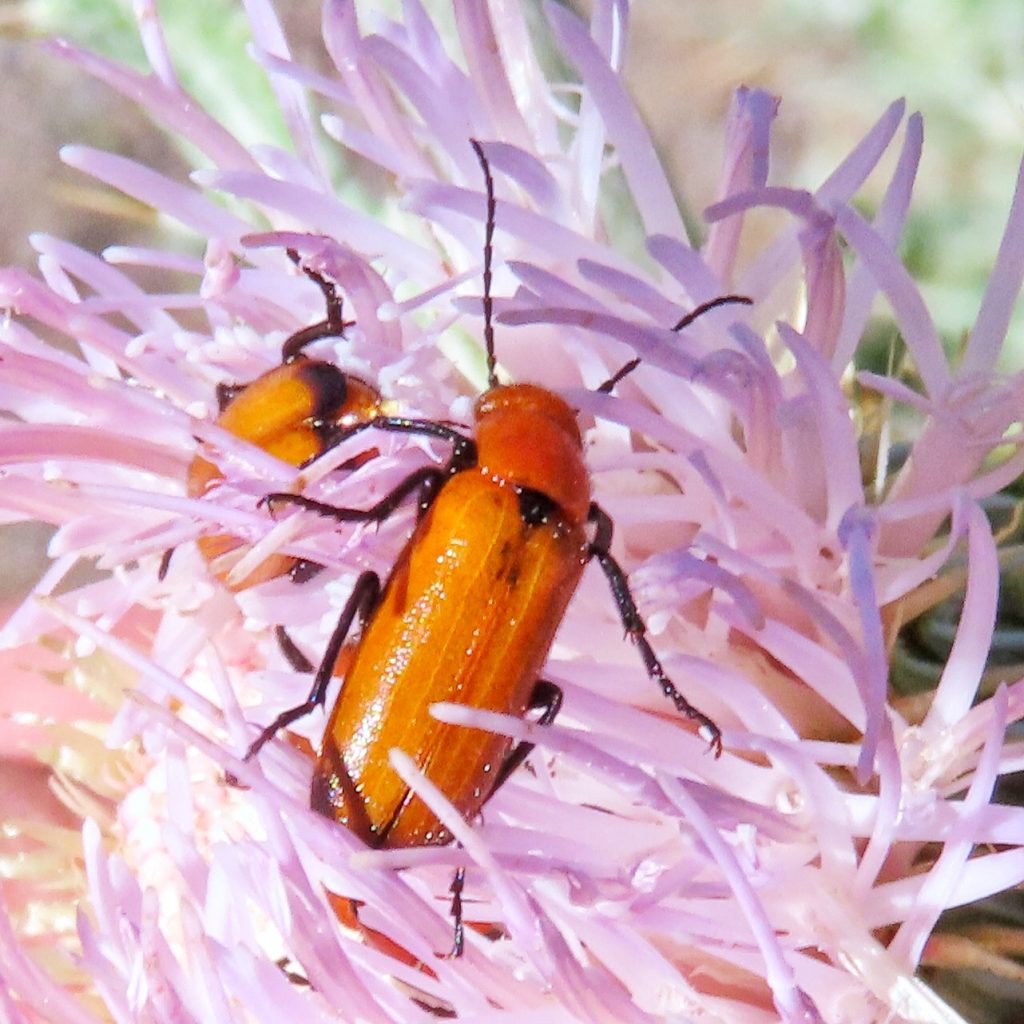
For my first post about the fascinating family Meloidae (blister beetles) I am profiling Nemognatha lutea, a relatively common denizen of our region. The first time I believe that I found one of these I foolishly assumed that a bright brownish orange beetle on Grey Green Thistle would be easy to identify from a photograph. That was at the Painted Hills National Monument, where it would have been a federal crime to collect it anyway. When I looked it up it turned out to be far from easy to identify without better views of the morphology, so I had to leave it as unknown, though I had a hunch it was Nemognatha.
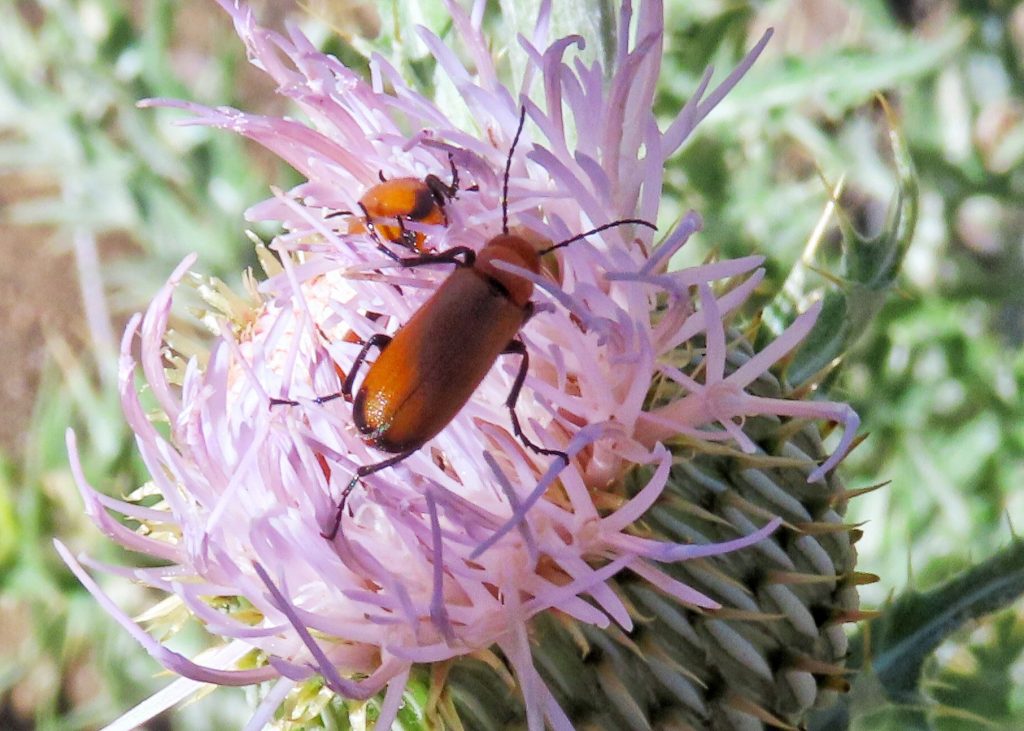
The next time I found one, also on Grey Green Thistle, it was on less restrictive BLM land, so I got a specimen. After I returned I took it over to the lab of my friend Craig Sondergaard, an entomologist who has worked for USFWS, and he walked me through the complicated and frustrating identification key until we had positively determined it to be Nemognatha lutea, probably ssp. dubia, based on the concave metatibial spur.
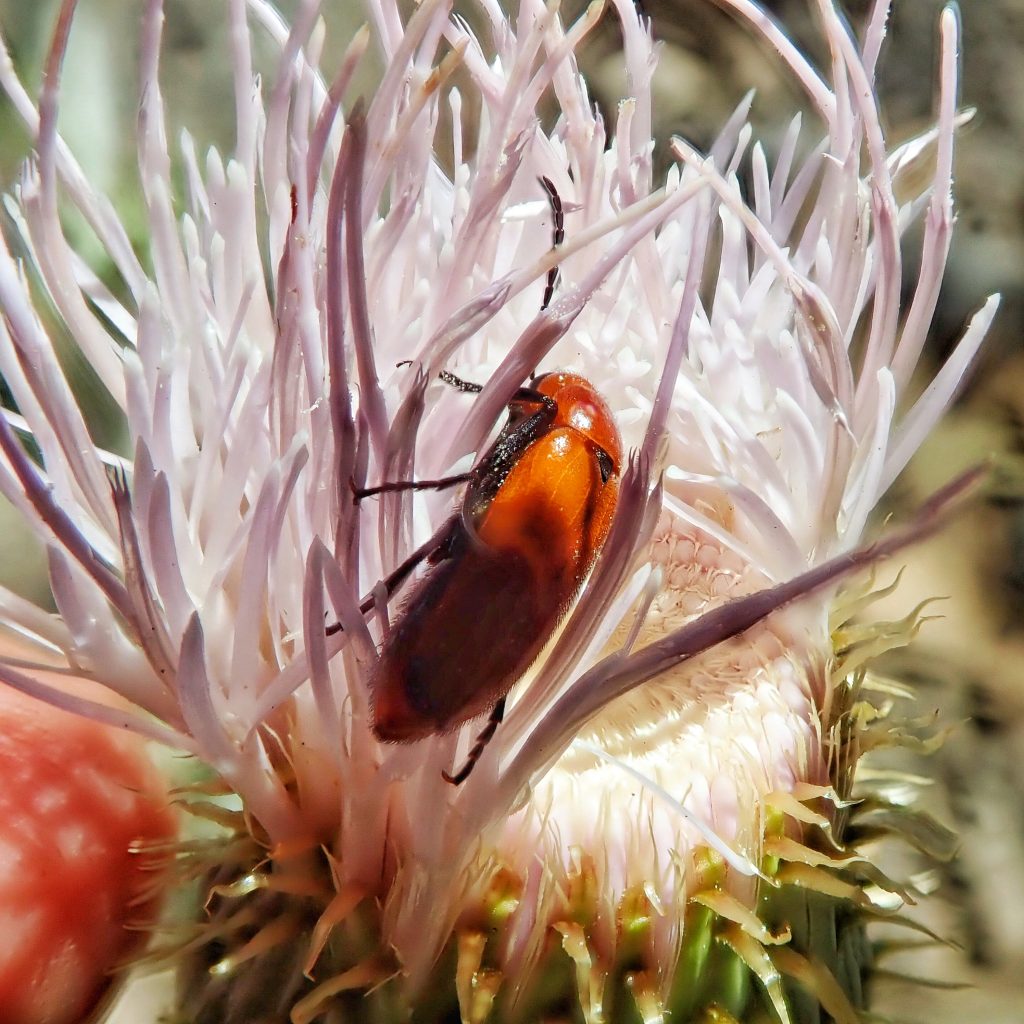
These beetles have an interesting and convoluted life cycle. The eggs are laid on the the plants on which the parents feed, and hatch shortly thereafter into triungulins (a form of planidium). These first instar larvae have three tiny claws on each leg that they use to attach to a suitable host (apparently something in the bee genera Megachile or Anthidium for Nemognatha lutea) when it visits their natal flower, which then transports them to its den, a process known as phoresy.
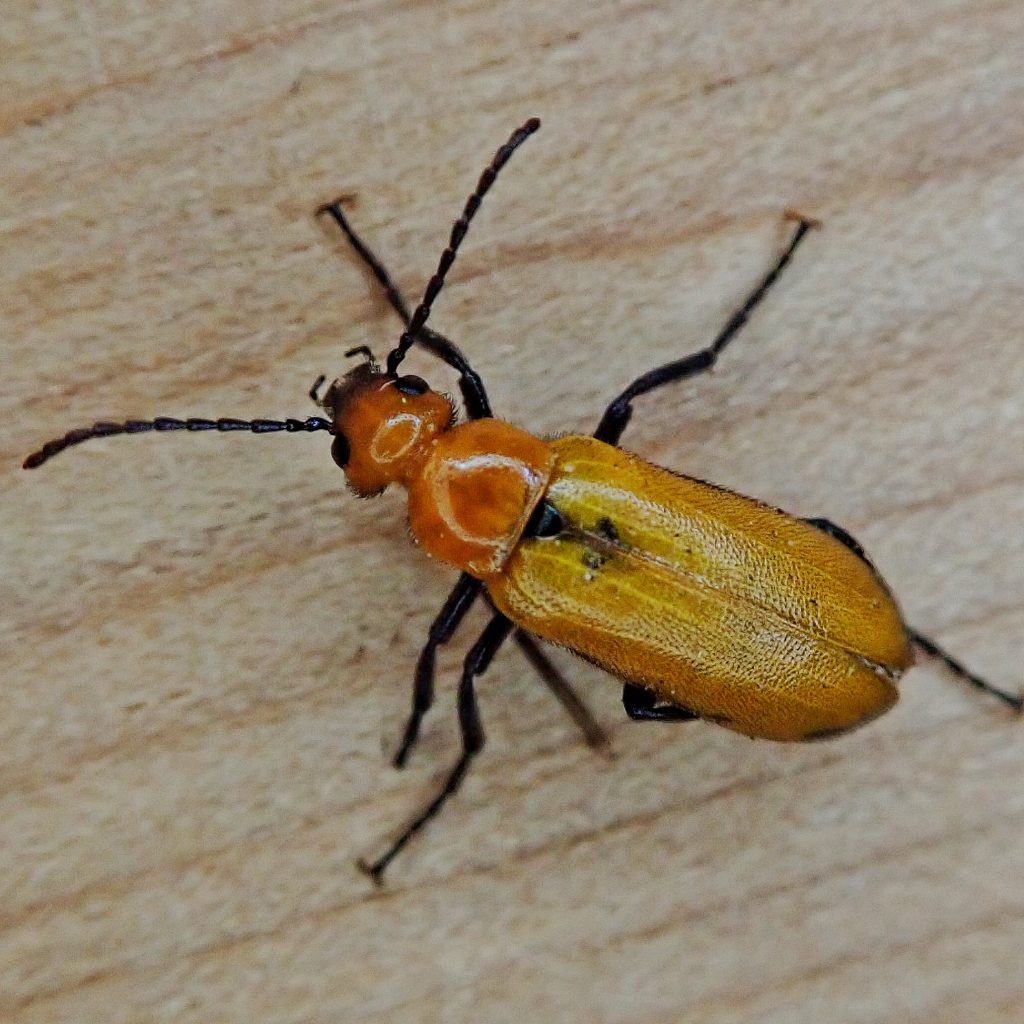
At the den the triungulin attacks the bee’s larvae and consumes it, as well as any future triungulins which may arrive, and then feeds on the pollen and nectar which the bee brings to its newly adopted offspring impersonator. At the 2nd instar they lose those triple claws and live out the rest of their larval life as a grub. It appears that they overwinter in the den in a state of diapause, and pupate in the spring, emerging as adults to start the process again.
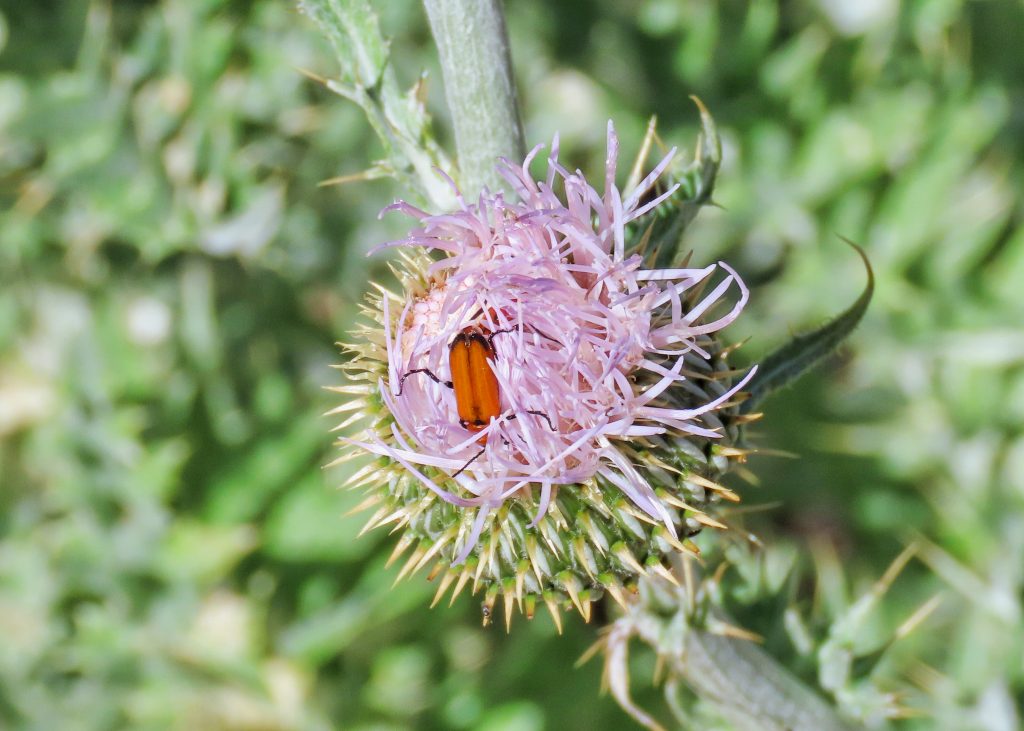
It has long been assumed that members of the tribe Nemognathini use their elongated mouthparts to suck nectar from flowers, but studies have shown that the galeae do not form a food canal, and that the bristles which coat them use a capillary action aided by peristaltic musculature to sweep food toward the mouth.
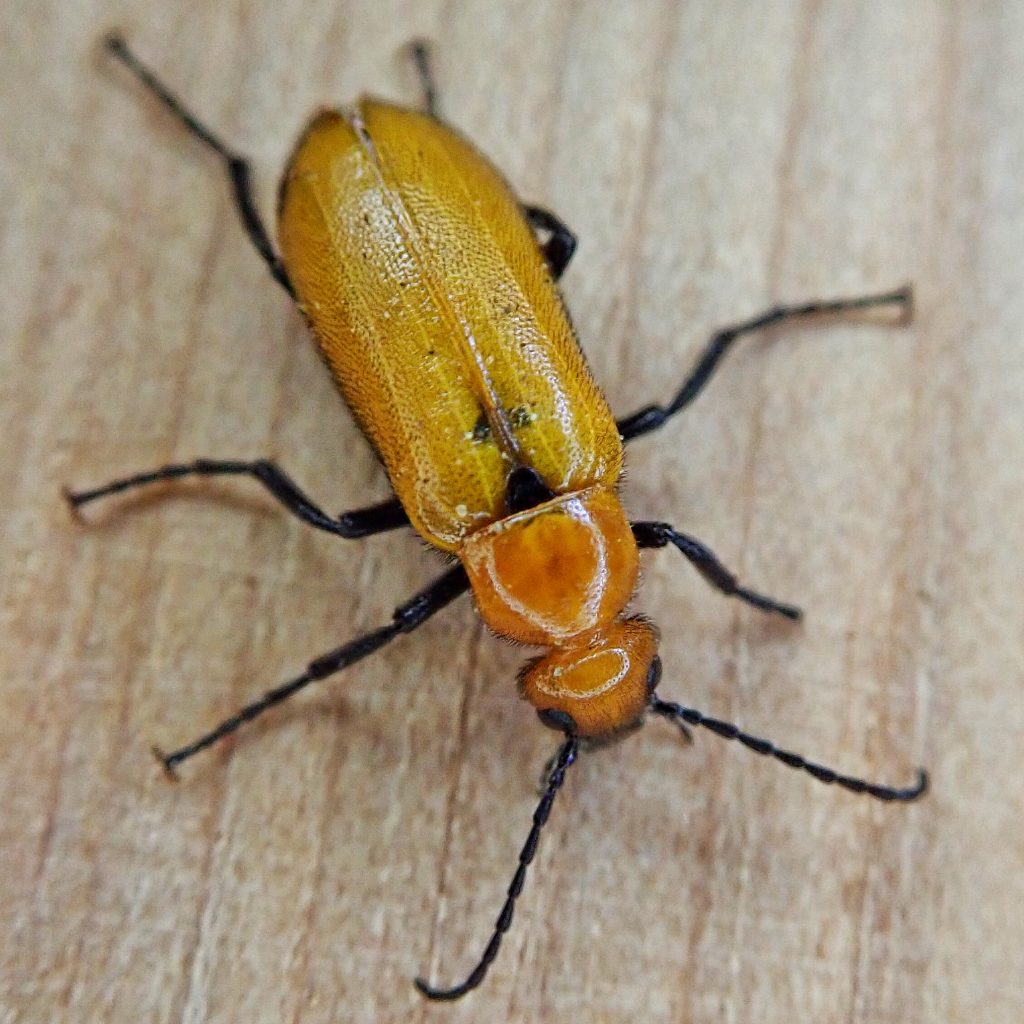
The blistering compound of blister beetles is cantharidin, a colorless, odorless terpene which produces chemical burns. It is exuded orally by larvae, and is produced in the leg joints of adults. It can be a significant hazard for livestock if they are fed hay containing these beetles. Males produce more cantharidin than females, because they use it as a copulatory gift to the female, who coats her clutch of eggs with it. Cantharidin is the active ingredient in the topical pseudo-aphrodisiac spanish fly, which produces a burning and itching when applied to sensitive skin.
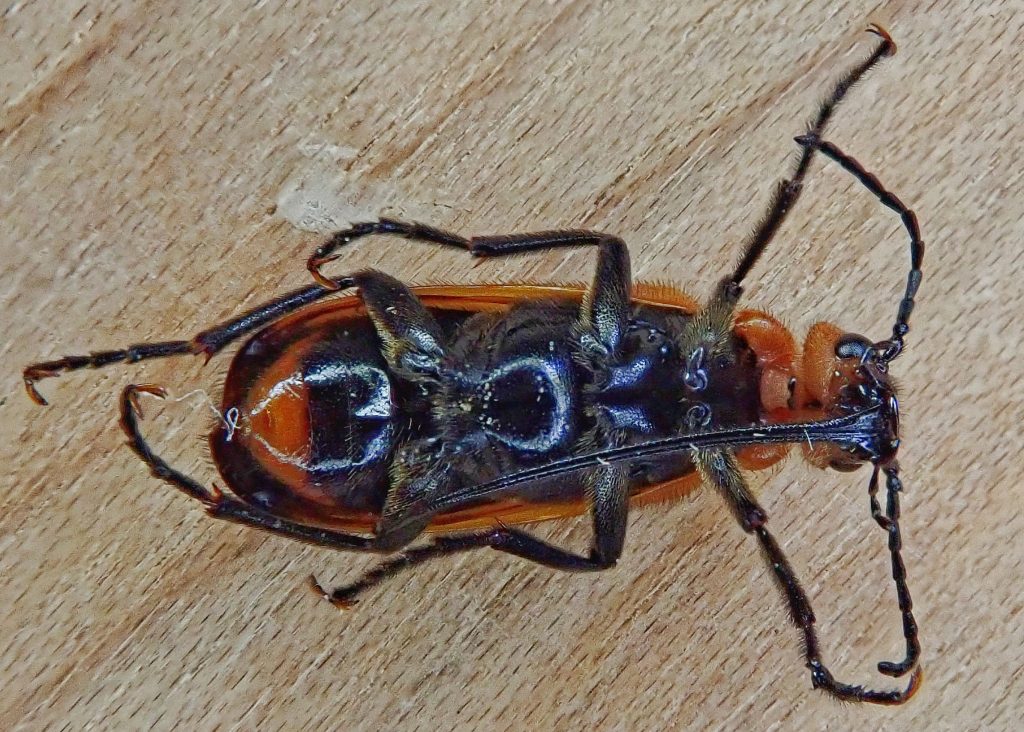
Description– Bright yellowish brown/orange, 8-14 mm long, with lighter parallel lines, and short, sparse black hair on the elytra; often with a dark spot near the apex of the elytra; scutellum, legs and antenna black; 4th and 5th abdominal sternites are not concave, but are densely punctured; outer metatibial spurs only slightly wider than long; galeae much longer than the pronotum.
Similar species-There are many, many similar brownish orange blister beetles in the tribe Nemognathini, and positive identification without magnification and a key is impossible. In fact, even positive identification to genus is unlikely without a specimen in hand and good optics.
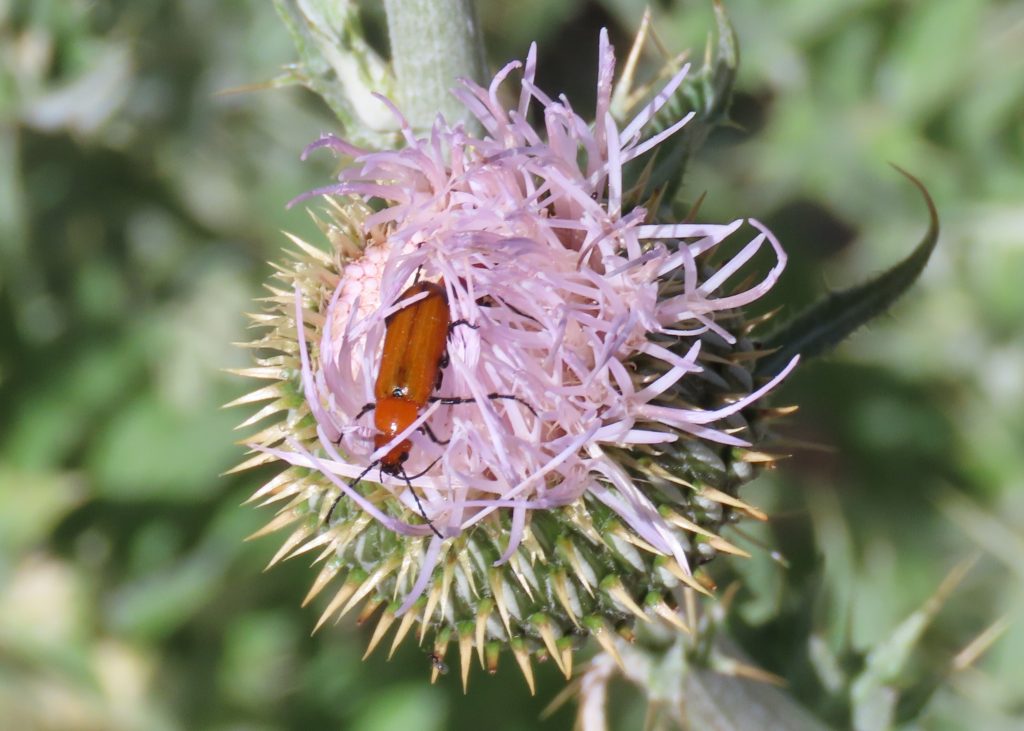
Habitat– Wherever there are Megachilid bees and Asteraceae (particularly Cirsium [thistles] and Helianthus [sunflowers]) plants.
Range-Throughout the western US; region wide in suitable habitat.
Eats– The woolcarder bees Anthidium emarginatum, and the leafcutters Megachile montivaga are known, involuntary larval hosts (although it is likely other members of these genera serve the same function), providing nectar and pollen, as well as eggs and larvae; Adults eat pollen, nectar, and some plant matter, from a variety of Asteraceae, including Cirsium cymosum.
Eaten by– Not many things eat them twice, because the cantharidin causes severe burning.
Adults active– March to October
Etymology of names– Nemognatha is from Greek, and means ‘thread jaw’, a reference to the elongated maxilla of this genus, through which they feed. The specific epithet lutea means ‘yellowish’ and refers to this species being perceived as a more yellow orange/brown than other Nemognatha.
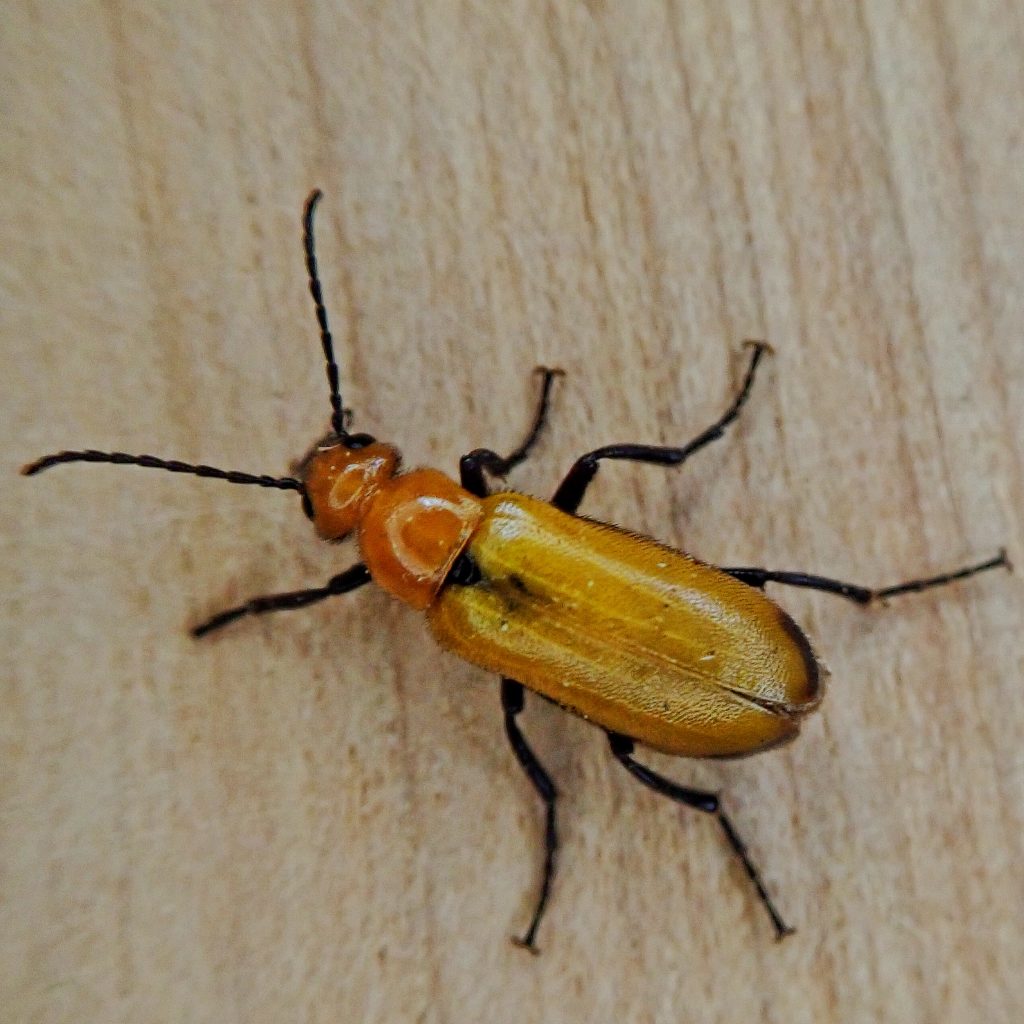
https://bugguide.net/node/view/27513
https://beetlesinthebush.com/2013/12/01/pedantic-sunday-blister-beetles-dont-suck/amp/
https://www.jstor.org/stable/25084893?seq=3#metadata_info_tab_contents
https://en.m.wikipedia.org/wiki/Planidium
https://www.merriam-webster.com/dictionary/triungulin
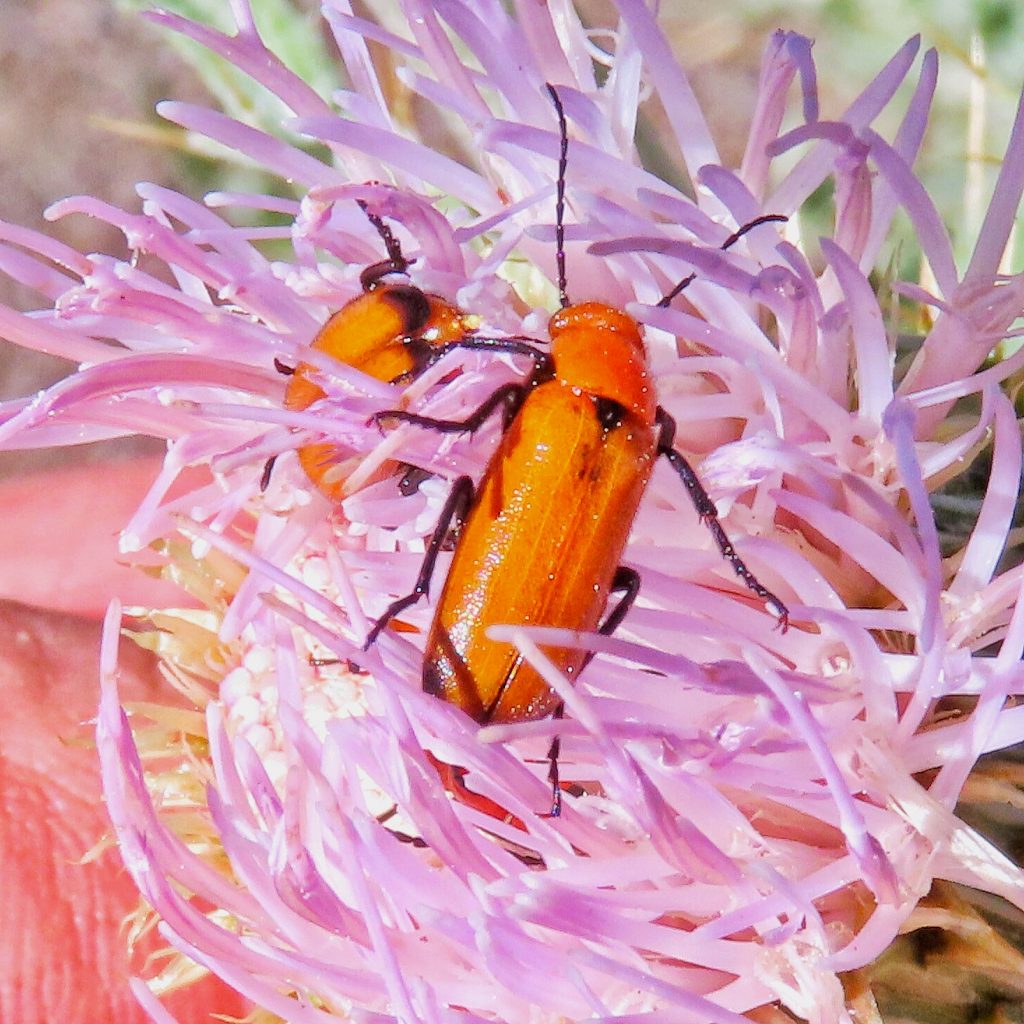
That sure makes for a beautiful photo, with the orange beetle on the purple thistle!
A favorite beetle family of mine! They have an interesting life cycle and significant defense mechanism. However, unlike the carabids (as you know, my favorite) there are not many species in our area. In spite of this, I’ve only found a small percentage of the fifty or so species.
We’ll have to get out there and raise that percentage for both of us!